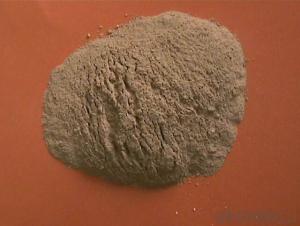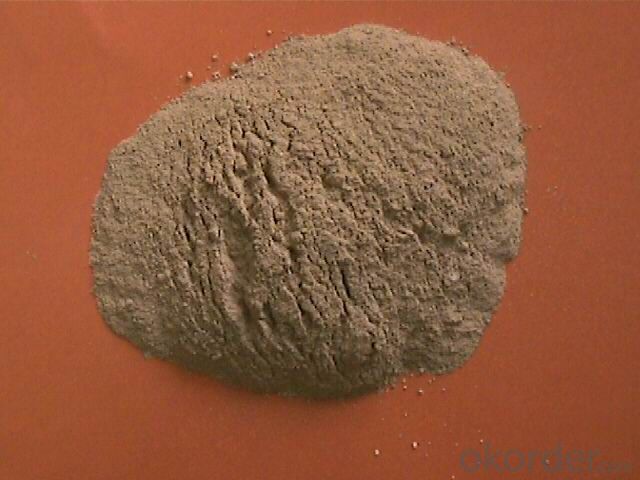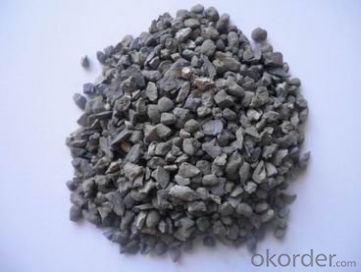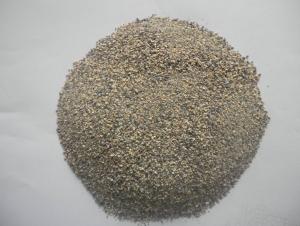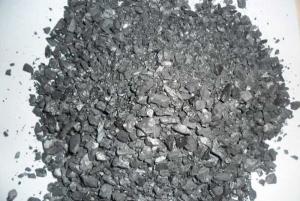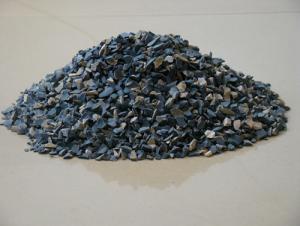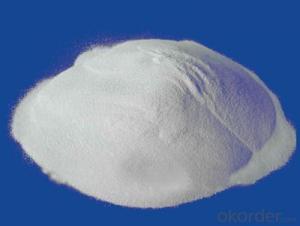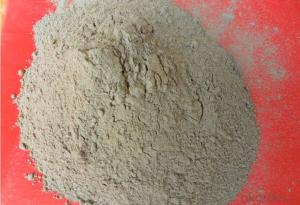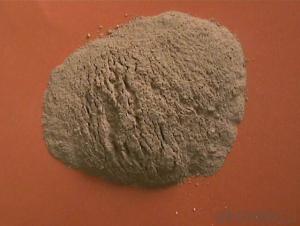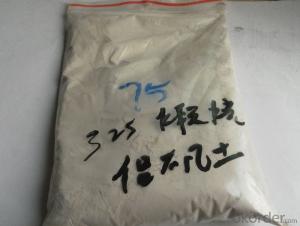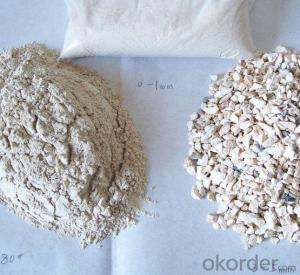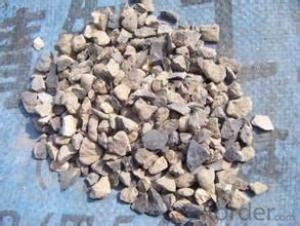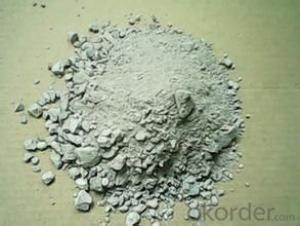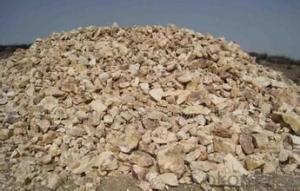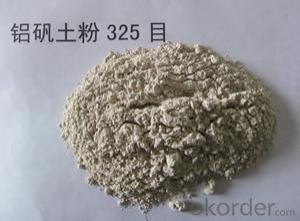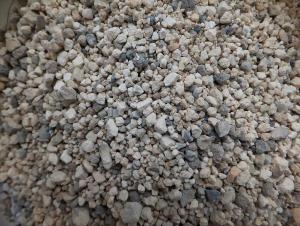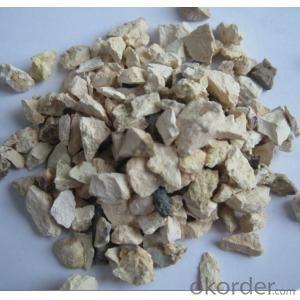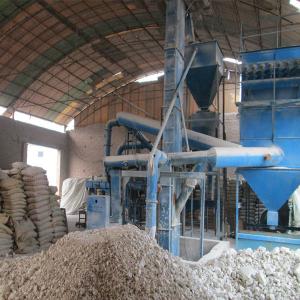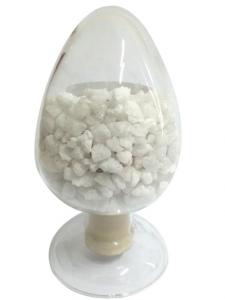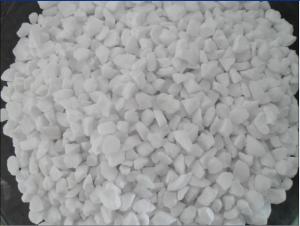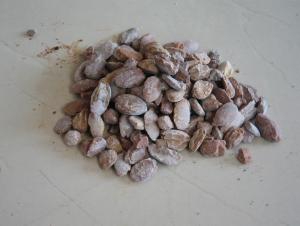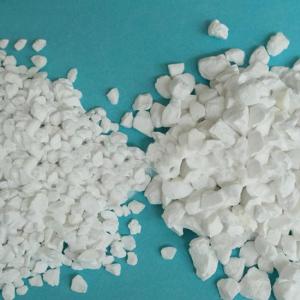Raw Materials for Refractory:90% Round Kiln Calcined Bauxite for Alumina Industry
- Loading Port:
- China main port
- Payment Terms:
- TT OR LC
- Min Order Qty:
- 0 m.t.
- Supply Capability:
- 25000 m.t./month
OKorder Service Pledge
OKorder Financial Service
You Might Also Like
1.Sepcification ,
AL2O3 90%min
Fe2O3 1.5%max
SiO2 4%max
TiO2 4%max
CaO+MgO 0.4%max
R2O 0.20%max
Moisture Absorption 3% max
Bulk Density 3.4g/cm3 min
2.Size200mesh,325mesh,100mesh,0-1mm,1-3mm,3-5mm and 5-8mm
3.Description
Bauxite is earthy mineral which consists mainly of Al2O3 , a kind of hydrated alumina containing impurities. According to the usage, It can be divided into the levels of Metallurgy, chemical industry, grinding, cement, and refractory. Clinker is pale yellow and dark grey. It is mainly used for high aluminum refractory material, and also can be used to make the fused corundum. Our materials of calcined bauxite is mainly D-K Style Bauxite Ore.
4.Specification,
Item | AL2O3 | FE2O3 | TIO2 | K2O+Na2O | CaO+MgO | Bulk density | Moisture Absorption |
AL70 | ≥ 70 | ≤3.0 | ≤4.0 | ≤0.6 | ≤0.6 | ≥2.7 | ≤5 |
AL75 | ≥75 | ≤2.5 | ≤4.0 | ≤0.5 | ≤0.5 | ≥2.8 | ≤5 |
AL80 | ≥80 | ≤2.5 | ≤4.0 | ≤0.3 | ≤0.5 | ≥2.9 | ≤5 |
AL85 | ≥85 | ≤2 | ≤4.0 | ≤0.3 | ≤0.5 | ≥3.0 | ≤4 |
AL86 | ≥86 | ≤2 | ≤4.0 | ≤0.3 | ≤0.5 | ≥3.1 | ≤4 |
AL87 | ≥87 | ≤2 | ≤4.0 | ≤0.3 | ≤0.5 | ≥3.2 | ≤4 |
AL88 | ≥88 | ≤1.8 | ≤4.0 | ≤0.25 | ≤0.5 | ≥3.25 | ≤4 |
AL90 | ≥90 | ≤1.5 | ≤4.0 | ≤0.25 | ≤0.5 | ≥3.4 | ≤3 |
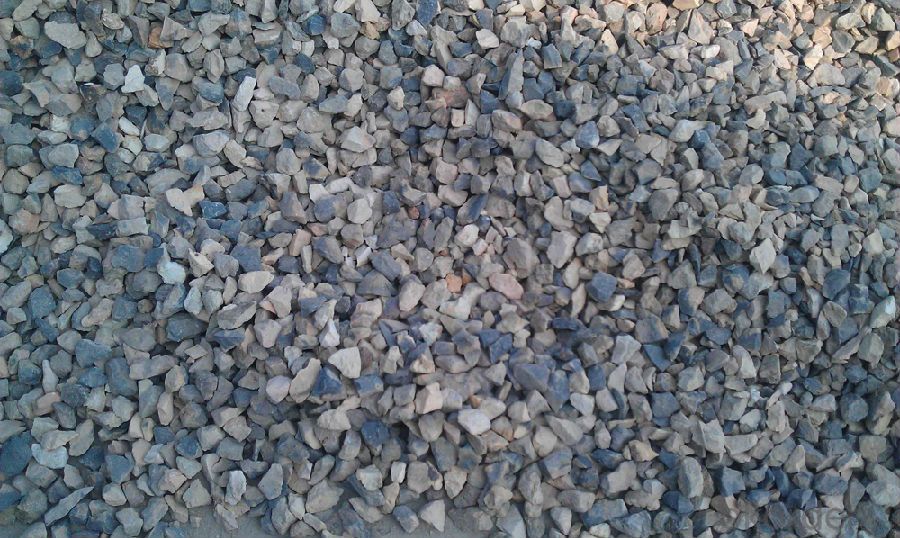
5.Material
Our material is from Yangquan, Shanxi,China. Yangguan bauxite ore have the best plasticity and adhesion. It can improve their product life.
Furnace and fuel,We have 6 shaft furnaces and use the gas for fuel. It can increase the temperature to fully burn, improve the bulk density and reduce impurities. In addition, using the gas can reduce the energy consumption, less CO2 emission for improvement of the work environment.
Annual supply, 60,000mt of calcined bauxite per year
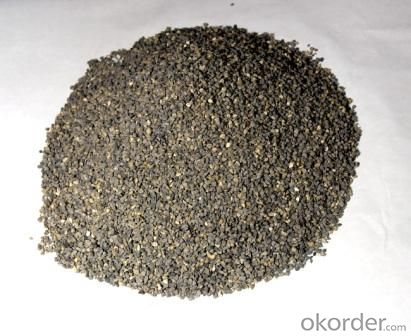
Inspection standard,
GB/T17617-1998----Sampling of raw materials and unshaped products
GB/T 2999-2002----Determination of bulk density of granular materials
GB/T 6900-2006----Chemical analysis of alumina-silica refractories
GB-325782---- Methods for chemical analysis of bauxite
SN/T 0481.1~0481.6—1995----Methods for inspection of bauxite for export
YB/T5180-1993----High-lumina bauxite and hard clay impurities inspection methods
GB/T 15545-1995----Unshaped refractory--Packing, marking, transportation and storage
Application,
1, Aluminium metallurgy
2, Precision casting/Investment casting,
bauxite grog fines can be made into mold for precision casting.
3, Refractory, High alumina bauxite's refractoryiness can reach 1780oC. It is charactered by good chemical stability and mechanical performance.
4, Aluminium silicate refractory fiber, The high alumina bauxite grog can melt under 2000oC to 2200oC in the electric arc furnace.After a series of processing, it can become aluminium silicate refractory fiber, which can be made into fiber blanket, cloth, plate and so on
5, Mixing magnesia and bauxite grog with binders to pour the molten steel ladle for better overall lining performance.
6,Producing bauxite cement
7,Abrasives
8, Ceramics industry
9, Chemistry industry for all kinds of aluminium compound.
- Q: How many kinds of refractory materials are there in the EI?
- I suggest that you contribute articles to foreign SCI journals for the odds are better, and generally the articles that fill the bill will not be rejected. The traditional refractory materials can contribute to EI journal. If being rejected by EI journal, you can also contribute to Russia's journal Industrial Ceramics and Refractories. I didn't contribute to the Journal of Wuhan University of Science and Technology, the receiving cycle is almost 3 to 4 months. Though the impact factor is low, domestic EI journal is not so good, it is still SCI journal. This is my own experience, please take my advice. The best journals are the Journal of the American Ceramic Society and the Journal of the European Ceramic Society, I heard that they are not bad. But the best domestic EI refractory material journal is the Journal of The Chinese Ceramic Society. It is very long, but if it belongs to your university, it is another pair of shoes. Journals now all want to have materials about functional ceramics, and they don't want Chinese articles, if your English is not well enough, you can choose Ceramics International and Japan Ceramics but they have strict manuscripts reviewing standards.
- Q: Can anyone tell me what is A-leve fireproof material?
- What you say is probably palstic! B-level means the fireproof rating is at B1-level because palstic material doesn't belong to fireproof materials. It only is fire?retardant. When wholesaling all kinds of insulation materials and construction, it need tos look at the names. B1-level refers to the fire endurance rating of the fireproof material, which is determined according to the fire resistance of the material. In addition, different parts of the material have different fire endurance ratings! You can download a "Specifications of Fireproof Design for Buildings" for further information!
- Q: What's the texture of refractory for the hearth of reverberatory?furnace? ?
- The long-term usage temperature of ceramic fiber is between 950-1260 degrees.
- Q: How long is the fire-fighting time of A class fire resisting window?
- Fire resisting window' duration of fire resistance: A class window, fire insulation ≥1.50h and fire resistance integrity ≥1.50h. Fire resisting window can be divided into three kinds: 一. window frame and sash framework adopt fire resisting window with steel manufacture ; 二. window frame and sash framework adopt fire resisting window with wooden manufacture; 三. window frame adopt steel and sash adopt wooden material or window frame adopt wooden material and sash framework adopt fire resisting window with steel material.
- Q: what is the original materials of fireproof coating?
- Fire retardant coating is composed of the base materials (that is film forming substance), pigments, ordinary coating additives, fire retardant agent and dispersion medium. In addition to fire retardant agent, other components functions the same as in ordinary coating, but its performance and thickness are specifically required. Some solvent-based fire retardant coating can burn upon encountering fire before construction.In fact,It is the flammable solvent contained in the coating that is burning while substances such as the base materials and fire retardant agent does not burn. Because solvent-based fireproof coating contains organic solvent and these fire-resistant coating, once leaked from the bucket, are likely to cause a fire. Fireproof coating on the substrate can insulate heat only after the solvent contained evaporates compeletly.
- Q: Is there requirement for radiation indicator in refractory?
- All refractories have no radiated harm to environment, so there is no requirement. From the elemental analysis, magnesite. I do not know it is helpful to you. But for refractory rwa material, any chemical element is radiated, including silicon?dioxide; If they are radioactive. From the use analysis, such as bauxite, do not have use value.
- Q: What's the poured refractory material?
- According to its category, raw material of basic refractory: Mainly magnesite (magnesia), dolomite, lime, olivine, serpentine, high alumina material (sometimes neutral); main neutral raw material: chromite, graphite, silicon carbide (artificial).
- Q: Can refractory be used as sealing element?
- It can. For example, fiber ceramics can resist high temperature! !
- Q: Does anyone know fire-proof material of fireproof wooden door?
- Because the timber of fireproof wooden door has gone through fire retardant treatment, so it can prevent fire. Its principle: Fire-retardant treated timber has become flame retardant material itself and its fire endurance has increased. The commonly used method of fire retardant treatment for timber including: Spraying method, soaking method, boiling method, vacuum method, vacuum-pressure method. Spraying method and soaking method are generally used for timber surfaces which are no longer going through planing process, and thin plate fire retardant treatment, whose thickness is less than 10mm . Vacuum method and vacuum-pressure method have excellent flame retardant efficiency, but their equipment are expensive. Fireproof wooden door refers to the door whose fire endurance of door frames, skeleton of the door leaf, door panels made of timber or timber work reaches the provisions of "GB50045-95 design of tall buildings for fire protection".
- Q: Where do China and foreign countries do more refractory materials?
- The domestic production of refractory materials base in Henan Xinmi, Xinmi has a lot of production of refractory material factory, Zhengzhou gold refractories plant is relatively large, there is a need to go to visit the factory.
Send your message to us
Raw Materials for Refractory:90% Round Kiln Calcined Bauxite for Alumina Industry
- Loading Port:
- China main port
- Payment Terms:
- TT OR LC
- Min Order Qty:
- 0 m.t.
- Supply Capability:
- 25000 m.t./month
OKorder Service Pledge
OKorder Financial Service
Similar products
Hot products
Hot Searches
Related keywords
